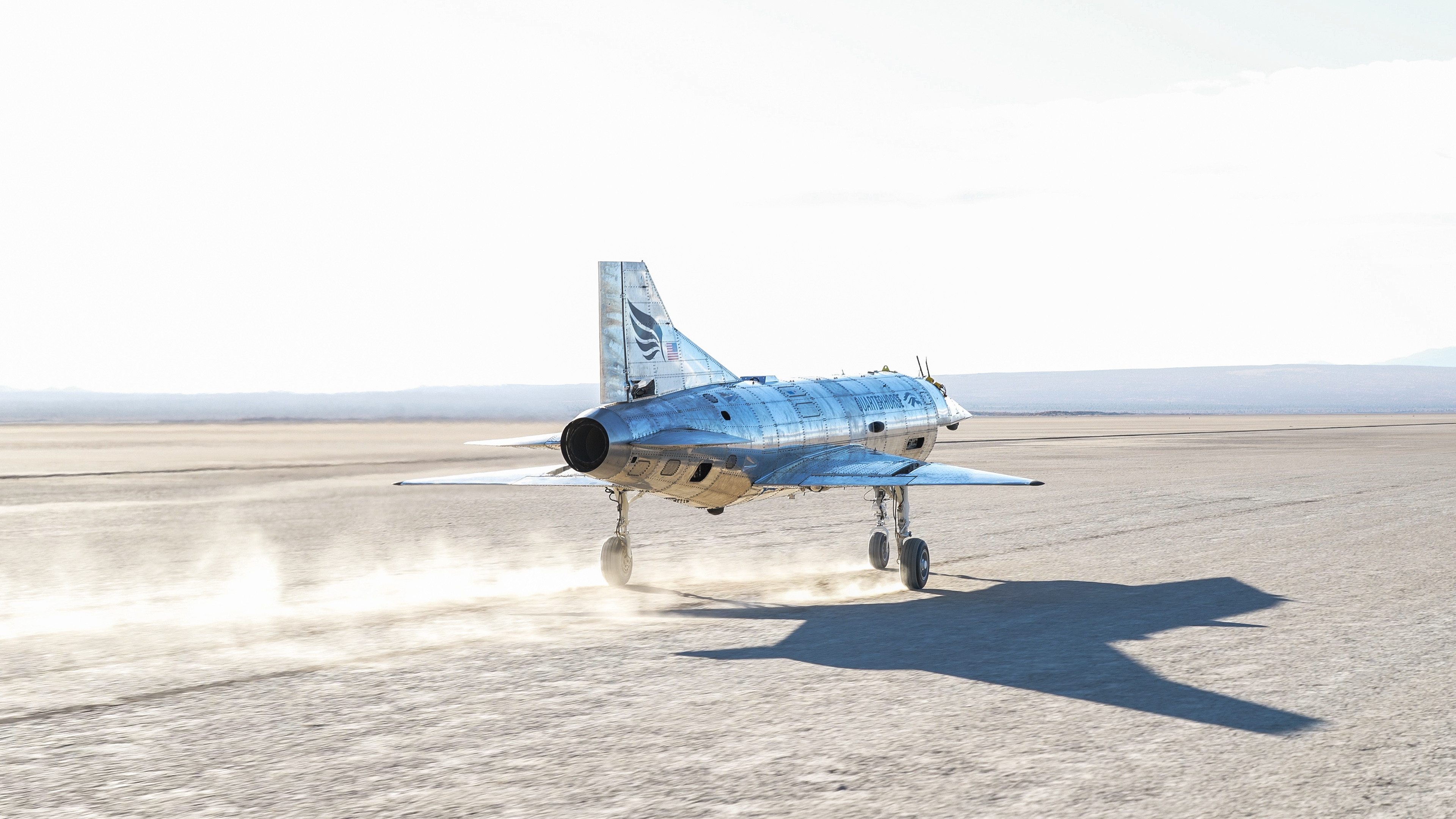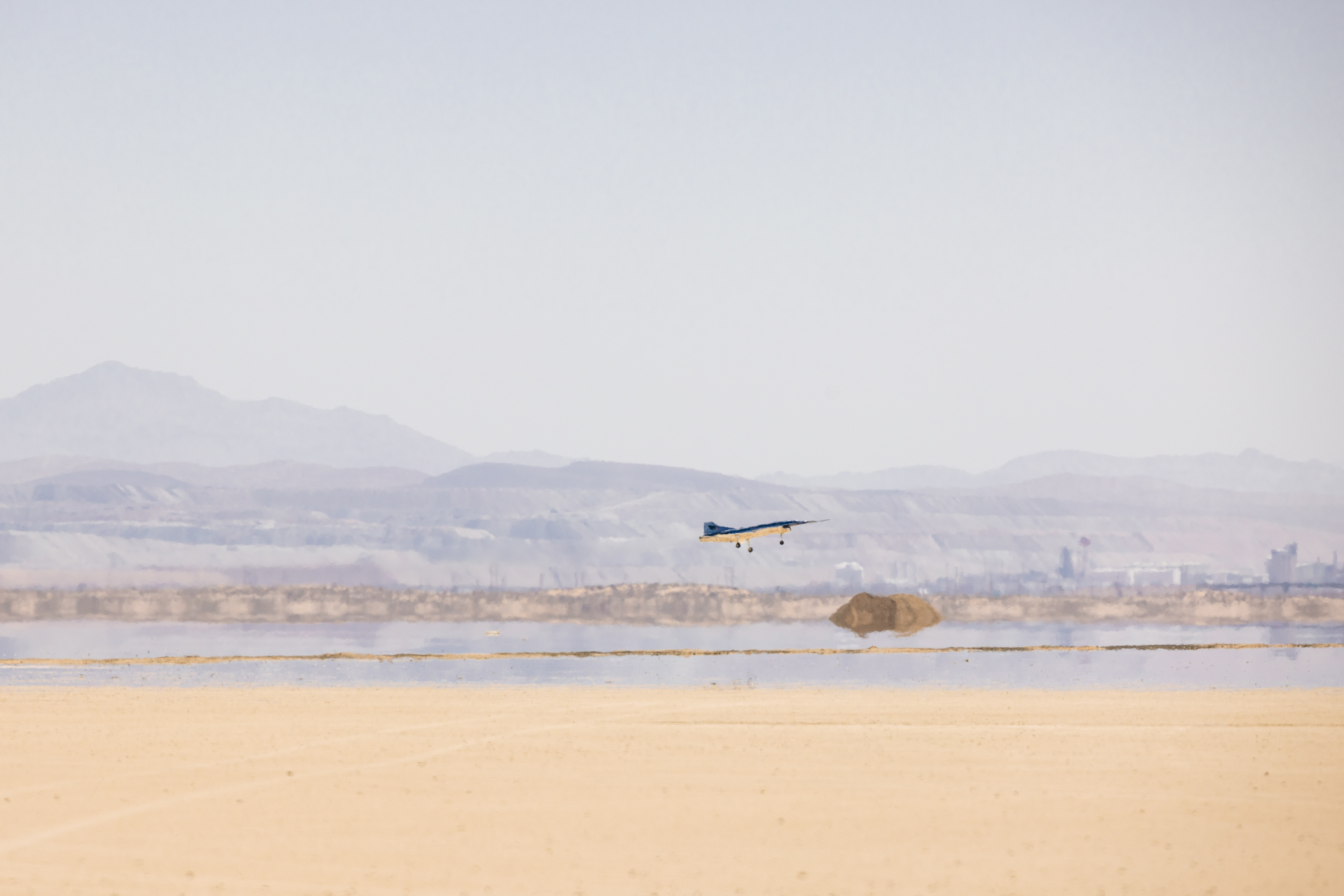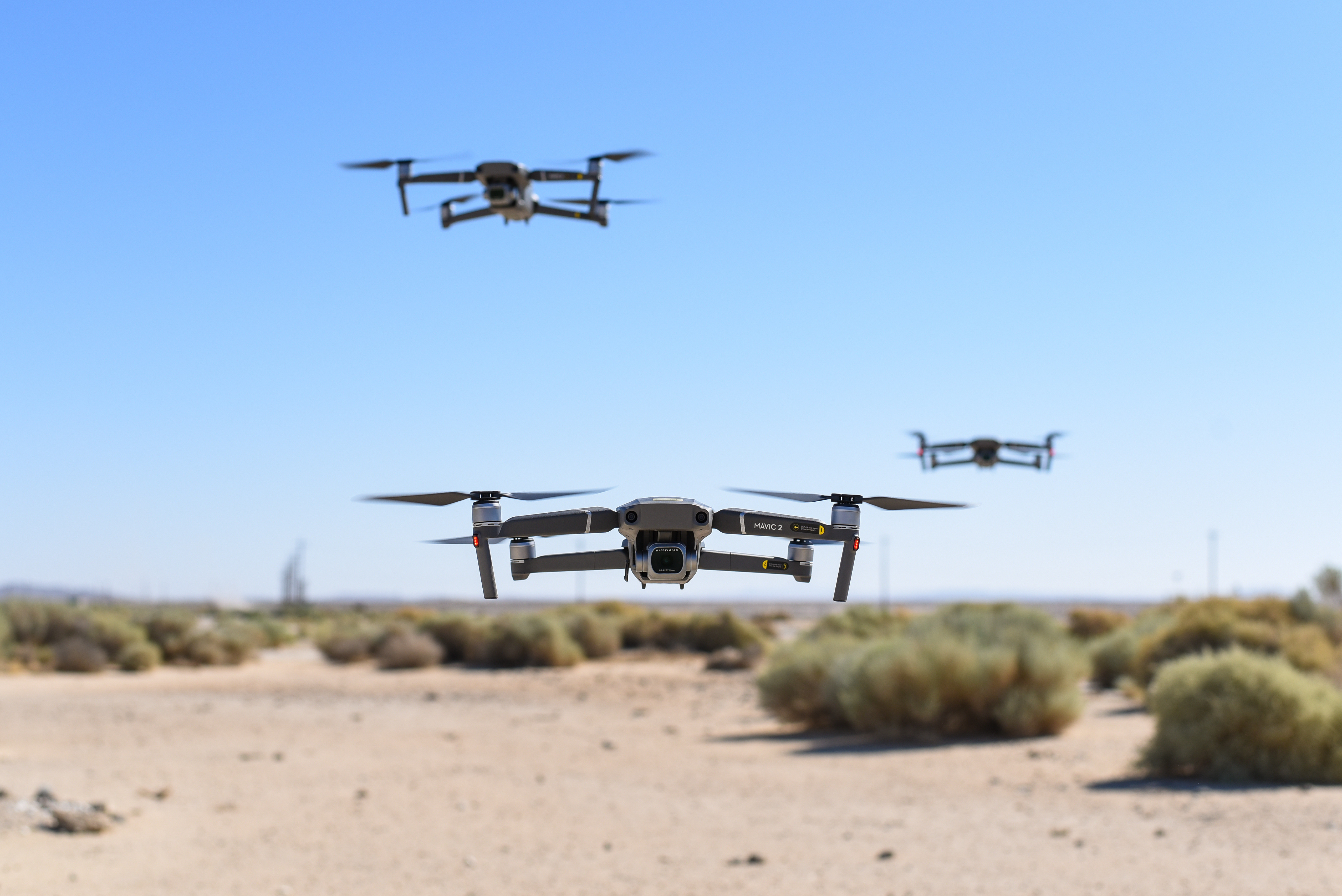EDWARDS AIR FORCE BASE, Calif. --

The Mk 1 Quarterhorse, a remotely piloted aircraft designed by Hermeus, departs from Rogers Dry Lake during testing at Edwards Air Force Base, California. The Mk 1 Quarterhorse was designed to demonstrate a rapid developmental pace, advancing Hermeus’ mission to operationalize hypersonic technologies. The Experimental Test Force at Edwards, formerly the Emerging Technologies Integrated Test Force, assisted with a novel airworthiness process without impact flight safety. This approach reflects a renewed emphasis on industry participation with the Air Force Test Center. (Courtesy photo)
In May 2025, the Hermeus Quarterhorse Mk 1 remotely piloted aircraft blasted off from Rogers Dry Lakebed and into the air. While this flight mirrored standard developmental test procedures, the Quarterhorse Mk1 became a fresh example of enhanced processes and procedures to improve test agility.
Inside the oldest operational hangar in the Air Force at Edwards North Base, Hermeus, a private company, and the Edwards-based Experimental Test Force (ETF) partnered closely to verify the unique “hardware richness” design philosophy, a construct that will allow Hermeus to rapidly develop new aircraft for a broad spectrum of customers.
While planning their testing and certification requirements, Hermeus came directly to the Air Force Test Center to take advantage of AFTC’s expertise in both developmental test and flight safety. The Air Force Test Center oversees three Air Force installations that conduct developmental and follow-on testing and evaluation of manned and unmanned aircraft, avionics, weapons, cyber systems, space capabilities and emerging areas such as directed energy and autonomy.
As AFTC continues to expand its focus on developing strong partnerships, the collaboration with Hermeus served as an effort to demonstrate accelerated capability development. The journey began at the Arnold Engineering Development Complex (another AFTC component) at Arnold Air Force Base, Tennessee, where a variety of integrated ground testing was completed on a “dynamic iron bird” airframe dubbed Mk 0.
Hermeus quickly relocated personnel and equipment to Edwards to execute ground testing with Quarterhorse Mk 1, while 412th Test Wing engineers at Edwards began planning and validating for airworthiness certification in partnership with the Federal Aviation Administration.

The Mk 1 Quarterhorse, a remotely piloted aircraft designed by Hermeus, departs from Rogers Dry Lake during testing at Edwards Air Force Base, California. The Mk 1 Quarterhorse was designed to demonstrate a rapid developmental pace, advancing Hermeus’ mission to operationalize hypersonic technologies. The Experimental Test Force at Edwards, formerly the Emerging Technologies Integrated Test Force, assisted with a novel airworthiness process without impact flight safety. This approach reflects a renewed emphasis on industry participation with the Air Force Test Center. (Air Force photo by Lindsey Iniguez)
The process of achieving certification demonstrated the current zeitgeist at Edwards. For example, 412th engineers made use of Section 927 of the 2024 FAA Reauthorization Act, which was passed to speed up the process of issuing waivers for remotely piloted aircraft. In addition, contractor-led testing with Air Force oversight enables faster developmental cycles for commercial partners while maintaining robust safety standards.
“The Hermeus Mk 1 test program at Edwards AFB provided opportunities to rapidly test systems of low technical maturity without compromising safety,” said Rebecca Martin, deputy director, Airpower Foundations Combined Test Force. “The combined test teams demonstrated the utmost professionalism in planning and executing a safe and effective series of test events for the platform.”
This new process will inform future testing by the ETF, a component of the 412th Test Wing’s Airpower Foundations Combined Test Force formerly known as the Emerging Technologies Integrated Test Force. With a broad focus on industry integration across small, unmanned aircraft systems, advanced sensors, and other technologies, ETF will continue to expand its capabilities by offering an increasingly agile path to new capability for the warfighter.
This framework also benefits the broader test enterprise, as the convergence of Collaborative Combat Aircraft (CCA) and combat autonomy compete for Edwards airspace over the next decade, with the goal of rapid iterations across multiple designs and contractors.
“Working with FAA to chart a new path to confirm airworthiness of commercial platforms like those Hermeus is developing has given us direct hands-on experience ahead of the unique demands CCAs may require for flight testing,” said Col. Thomas Tauer, commander, 412th Test Wing. “This project allowed us to explore many ideas without impacting the safety and risk management process we are reliably known for at Edwards.”

The Experimental Test Force, part of the Airpower Foundations Combined Test Force at Edwards Air Force Base, will focus heavily on sUAS testing and integration. (Photo by Staff Sgt. Rachel Simones)